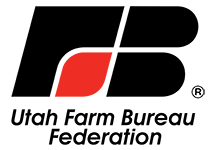Wildfire Safety Starts at Home
Author
Published
8/4/2025
USU Extension, in collaboration with KUTV 2 News and reporter Brian Schnee, recently developed a video to answer the question, “What can one do to protect their home from a wildfire?” The video includes steps property owners can take when living in Utah’s Wildland/Urban Interface (WUI) where homes are built into the forests and rangelands. It is intended to spearhead thought and provide resources for those living in the WUI.
While Utah will probably not see the urban fires witnessed in the Los Angeles area, the recent Forsyth Fire that burned 13 homes in Pine Valley, is evidence that we can see losses from wildfires in Utah. Those who live in the Wildland/Urban Interface have a shared responsibility with those around them to learn how to live within wildland fire zones.
Consider the home ignition zones, broken into three areas, when working to protect your home from a wildfire:
- Immediate Zone (0 to 5 feet around the house) – Some refer to this area as the lean, clean, and green zone. It should mostly be devoid of anything combustible. Consider using stone materials instead of wood mulch, no vegetation (unless you have an irrigated lawn), and removing piles of firewood by the house. Branches from adjacent trees should reach into this area. This zone also includes your home. Look for open vents where embers could get into the attic and add screens to protect them. Dead needles should be removed at least annually on and around the house. Also be aware that something as simple as a door mat made of natural fibers could collect embers and catch fire.
- Intermediate Zone (5 to 30 feet from the home) – Have a well-maintained and green landscape that is free of weeds and brush. Break up vegetation by using walkways and gravel instead of mulch. Choose deciduous trees over conifers. A single tree and bush are acceptable, but remember, the more foliage, the higher the risk for fire. Ladder fuels, such as tall grasses, shrubs, and low-hanging branches, should be trimmed beneath trees so fire can’t go up into the canopy of the trees.
- Extended Zone (30 to 100 feet) – Keep in mind the 30-foot spacing includes structures such as sheds and other buildings that are on your/your neighbor’s properties. You can include groupings of vegetation, but they should be thinned and not interconnected with other vegetation. Ladder fuels should be trimmed. The extended zone includes flat terrain and can be extended to 200 feet if a steep slope exists below your home. Many people do not have this much space, but if you do, it is important to cooperate and coordinate with your neighbors.
From individual homes to urban configurations, structure loss continues to happen in the western United States, worldwide, and in Utah. While these measures will not ensure the survival of a structure, they at least give you a greater probability of success. The concepts of a home ignition zone will also provide for greater firefighter safety and give fire suppression resources a good chance at saving your home.
Many local fire departments, the Utah Division of Forestry, Fire, and State Lands, and county fire wardens can conduct home assessments to help you better understand what can be done to protect your house. There are numerous sources of information about reducing your risk of wildland fire.
- The National Interagency Fire Center offers resources to help protect your home and plan for wildfire.
- The National Fire Protection Association has resources, including their Firewise information and How to Prepare Your Home for Wildfires.
- Utah State University offers the booklet, Firewise Landscaping in Utah.
We all need to do our part to develop fire-adapted communities when living in the WUI, or where the “eves meet the leaves.”
Want more news on this topic? Farm Bureau members may subscribe for a free email news service, featuring the farm and rural topics that interest them most!
